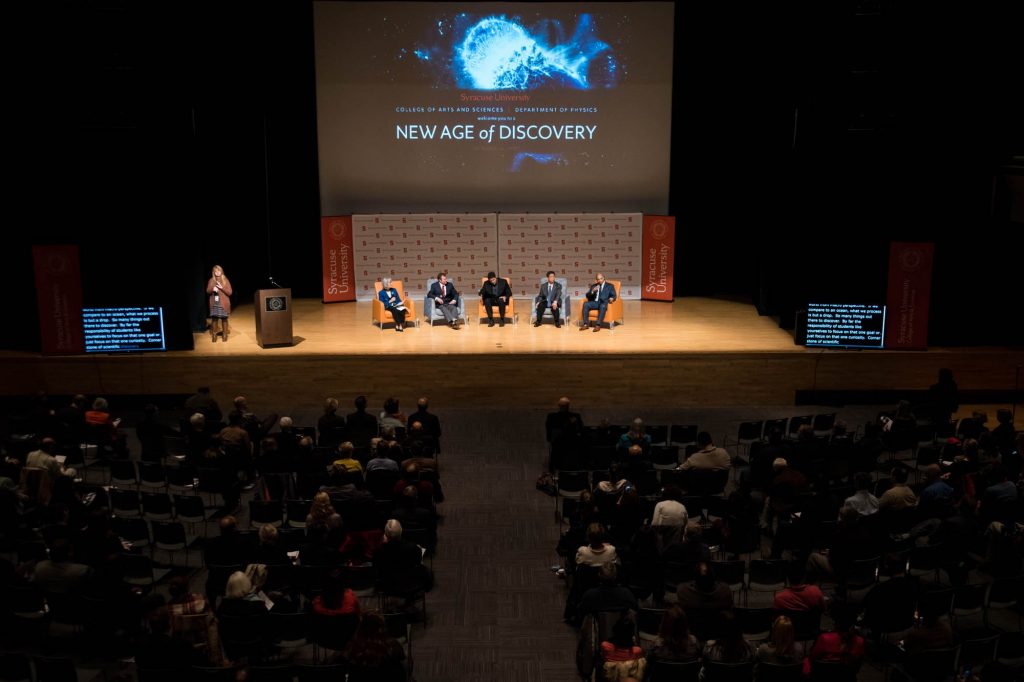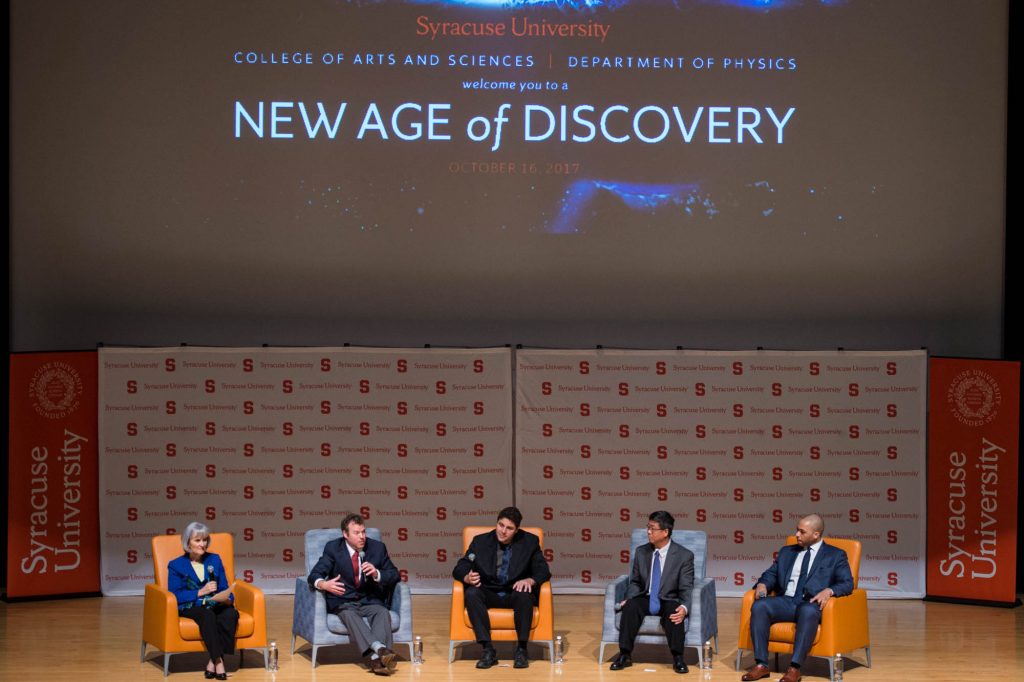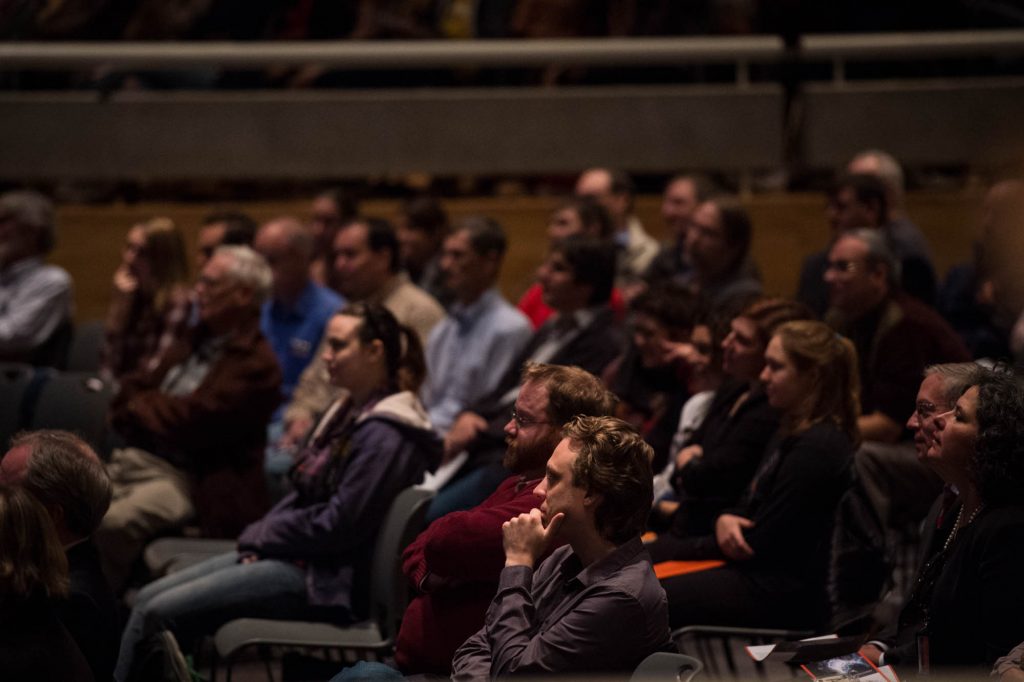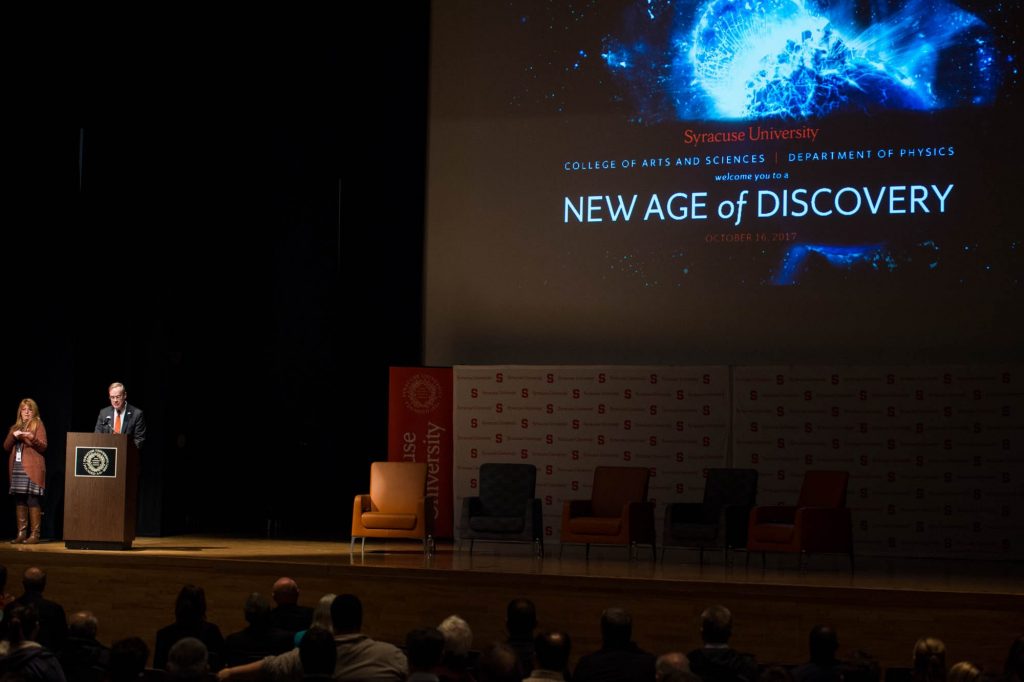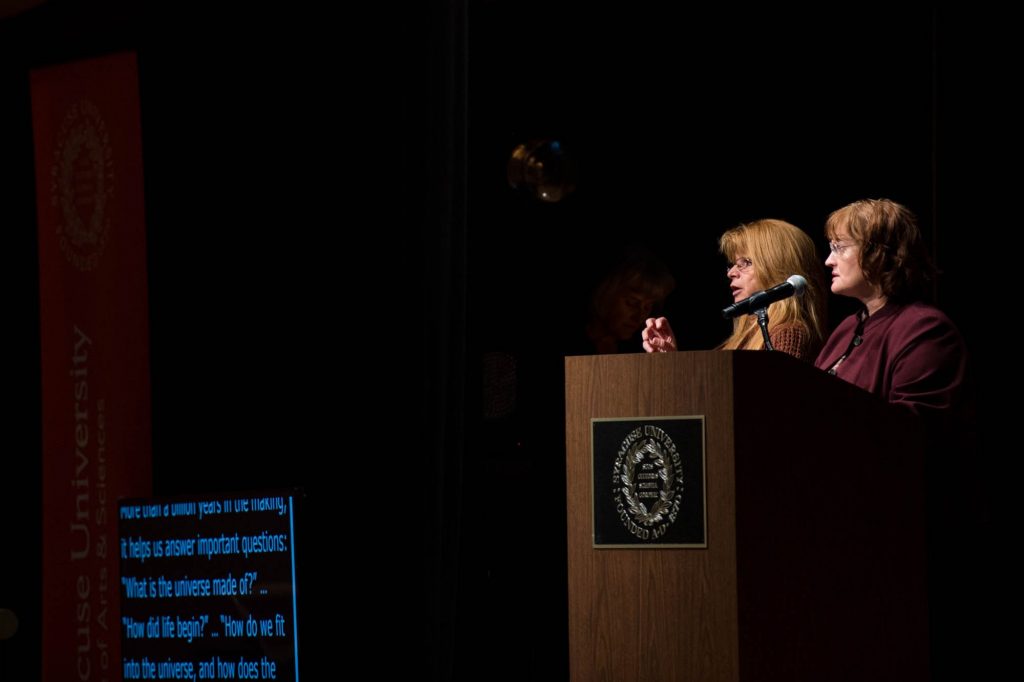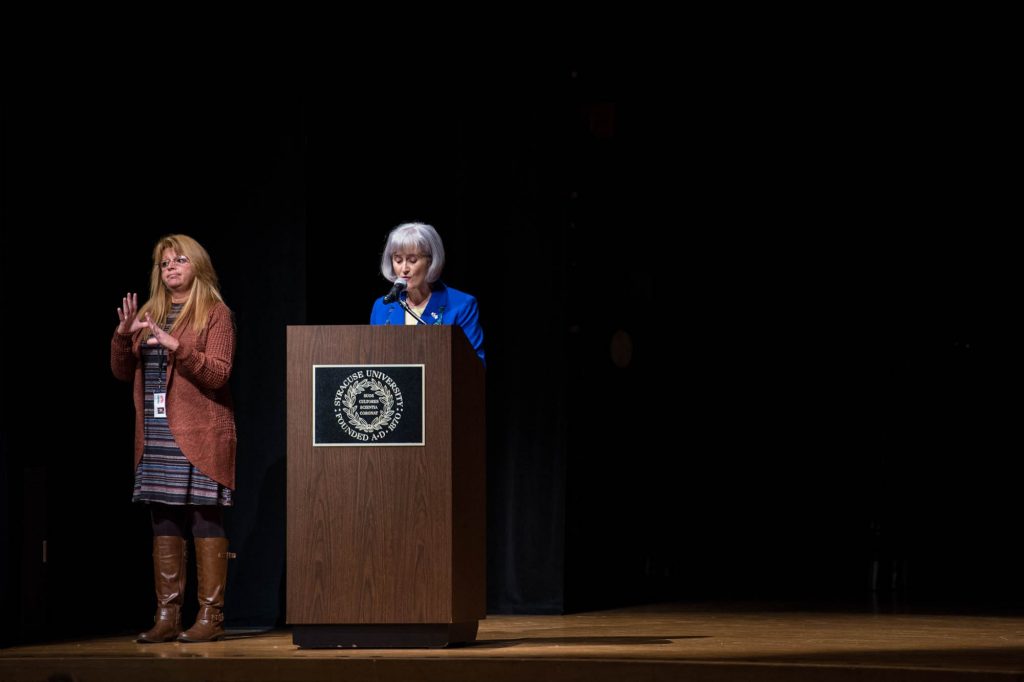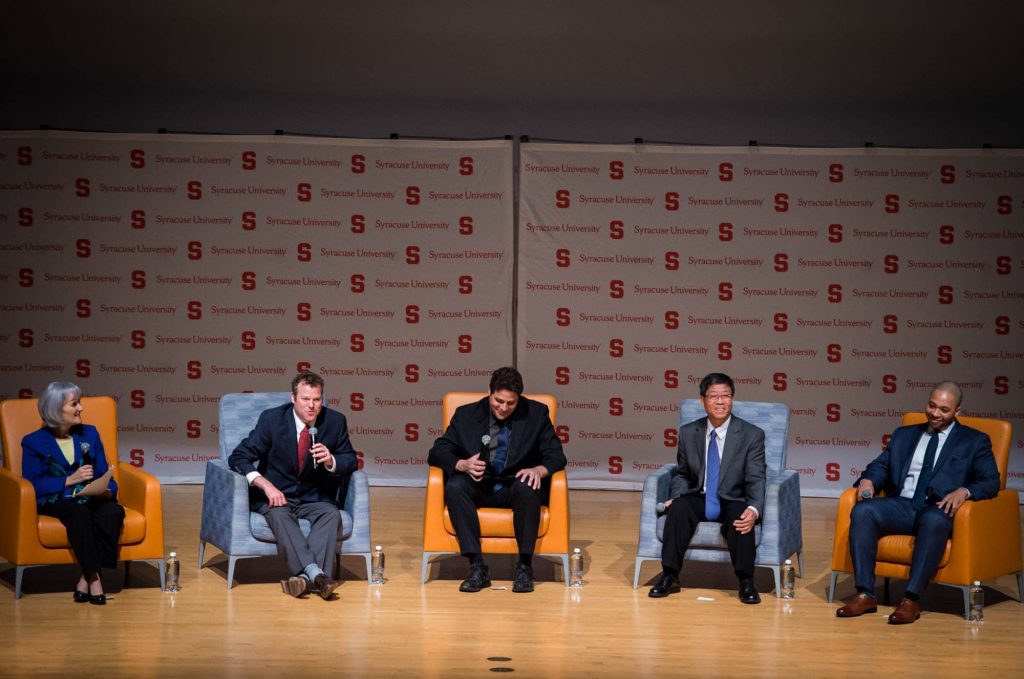LIGO, Syracuse physicists announce 1st detection of neutron star collision
LIGO, SU physicists detect 1st neutron star collision
Syracuse University officials joined the National Science Foundation on Monday to announce a discovery that confirmed the origins of gold, platinum and other heavy metals.
The announcement was made via simulcast in Goldstein Auditorium, where attendees listened to NSF Director France Córdova and Dr. Dave Reitze speak from Washington, D.C.
On Aug. 17, scientists “heard” gravitational waves given off by the collision of two neutron stars. Combining the resources of the Laser Interferometer Gravitational-Wave Observatory and Virgo detectors, scientists were able to hone in on the likely source of the waves. After training powerful telescopes, like NASA’s Hubble Space Telescope, on that location, scientists observed the radioactive afterglow of the collision.
Neutron stars are the smallest, densest stars. A typical neutron star has a diameter about that of Manhattan, or 12.5 miles. These neutron stars are the collapsed cores of exploded suns, also known as supernovas.
Prior to the discovery, scientists had only speculated about the creation of the periodic table’s heaviest elements, like gold and platinum. These heavy elements necessitate a rapid infusion of neutrons, and scientists originally believed supernovas were the source of this process. But evidence recently pointed to colliding neutron stars instead.
At the panel discussion Monday, SU contributors Duncan Brown, Stefan Ballmer, John Liu and Jaysin Lord answered questions about the discovery. Brown, the Charles Brightman Endowed Professor of Physics, said neutron star collisions are more frequent than those of black holes but weaker and more difficult to detect.
“Very quickly we realized, this signal is incredibly loud,” Brown said. “By astronomy standards, this signal is nearby.”
Speaking to local high school students who were in attendance, Lord, a recent SU graduate who helped with the project, said this historic announcement is just the beginning of discovery.
“We understand the world from a very macro perspective all the way down to an atomic one,” Lord said. “If we were to compare all the knowledge in existence to an ocean, then what we currently possess is but a drop.”
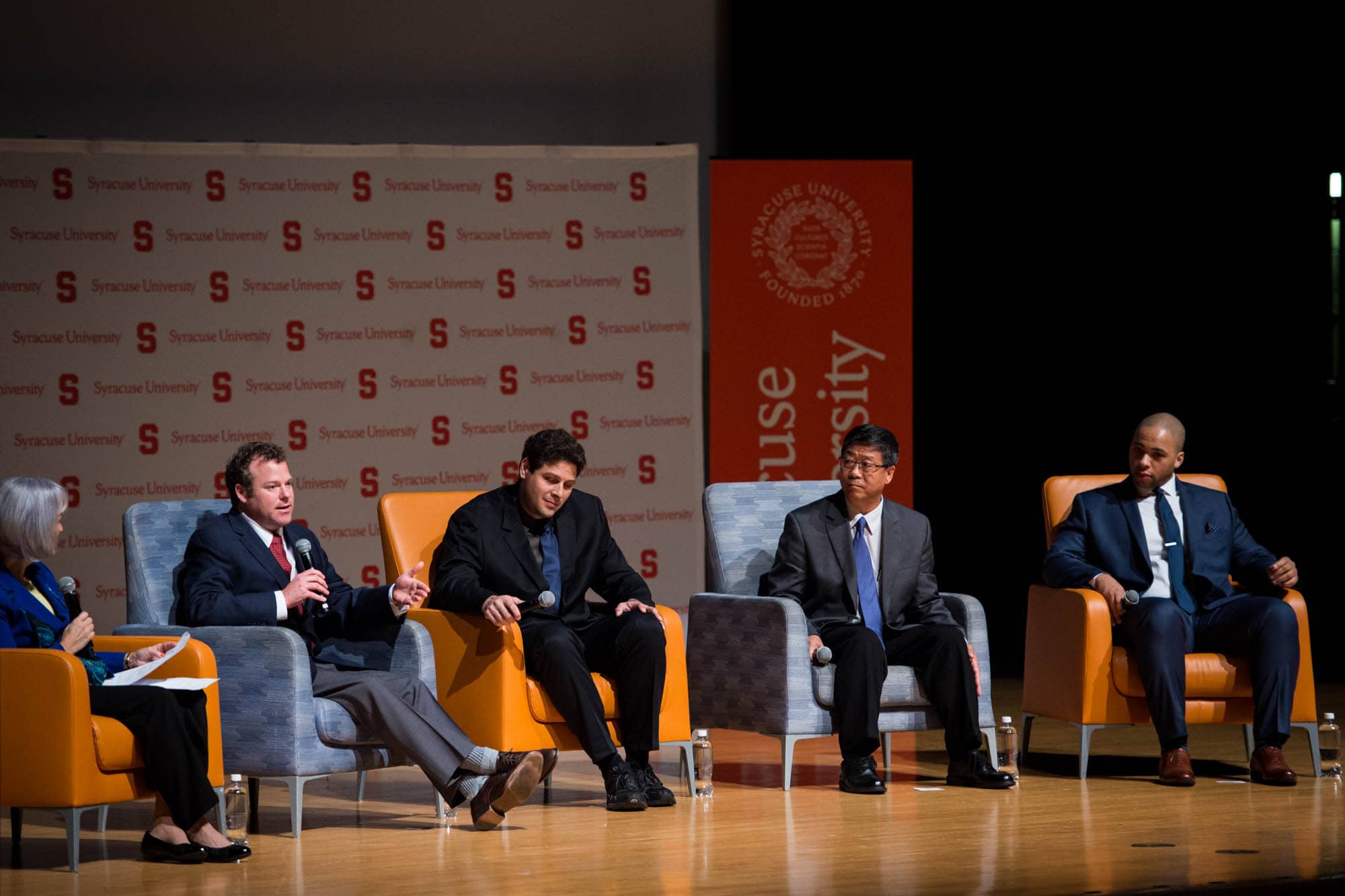
Chancellor Kent Syverud also addressed the audience, pointing out that in February 2016 SU was part of the worldwide announcement made by LIGO and Virgo teams when gravitational waves were confirmed for the first time. This Nobel Prize-winning discovery was made by observing the merge of two black holes.
Syverud recalled a question asked that day about what scientists expected to discover next and what implications the discovery had on fields other than physics.
“On February 11th, 2016, Professor Duncan Brown answered those questions,” Syverud said. “What he basically said was this: ‘We don’t know what gravitational waves will enable us to observe. But we know it will be full of wonders and we know it will have implications way beyond physics and astronomy.’ Today, 20 months later, on October 16th, 2017, Duncan Brown has been proved right.”
Ballmer, an associate professor of physics and a key member of the team that designed and built the Advanced LIGO detectors, called this discovery “tremendously gratifying.”
As Karin Ruhlandt, dean of the College of Arts and Sciences, said: “The future is only the beginning.”

